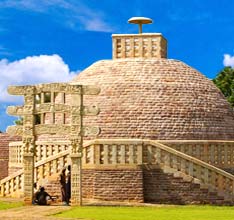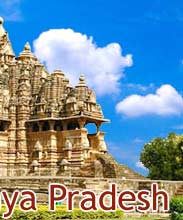Mandu, with its checkered and rich historical past,
stands as a tribute to the amorous love of the poet-prophet Baz Bahadur,
for his wife Rani Roopmati. A place that still echoes its royal finery,
in the form of its palaces, mosques and mausoleums, the beauty of Mandu
seems to drip from every brick and mortar of its monuments. The
picturesque hilltop, with the breathtaking Vindhyas in the backdrop, was
an erstwhile monsoon capital of the Mughal emperors. To get information
on the weather and climate of Mandu, just go through the following
lines.
Summer
Mandu enjoys an extreme type of climate. The summer season lasts from
April to June. Typical of the climatic condition of Madhya Pradesh,
summers in Mandu are hot. However, due to its elevated position, the
heat is endurable and mild as compared to other cities like Gwalior and
Ujjain. The maximum temperature during the summers is 36oC.
Winter
Mandu experiences winter season from the month of october to the month
of February. The maximum winter temperature hovers around 22oC
during the day. However, nights are comparatively cooler and during the
night, the mercury level drops down to a minimum of 7o C.
However, winters are very pleasant and Mandu remains a busy tourist
destination during this season.
Monsoon
The beauty of Mandu can be best experienced during monsoons. This
season lasts from July to September. The average annual rainfall is
recorded at 1050 mm. The whole place wears a verdant gown, with
fruit-laden and lush trees of mango, tamarind, baobab and banyan.
Moreover, the pastel shades of the monuments stacked in the green
landscape imparts a magical aura to the place. Monsoon remains the most
ideal time to relish the charm of Mandu.









